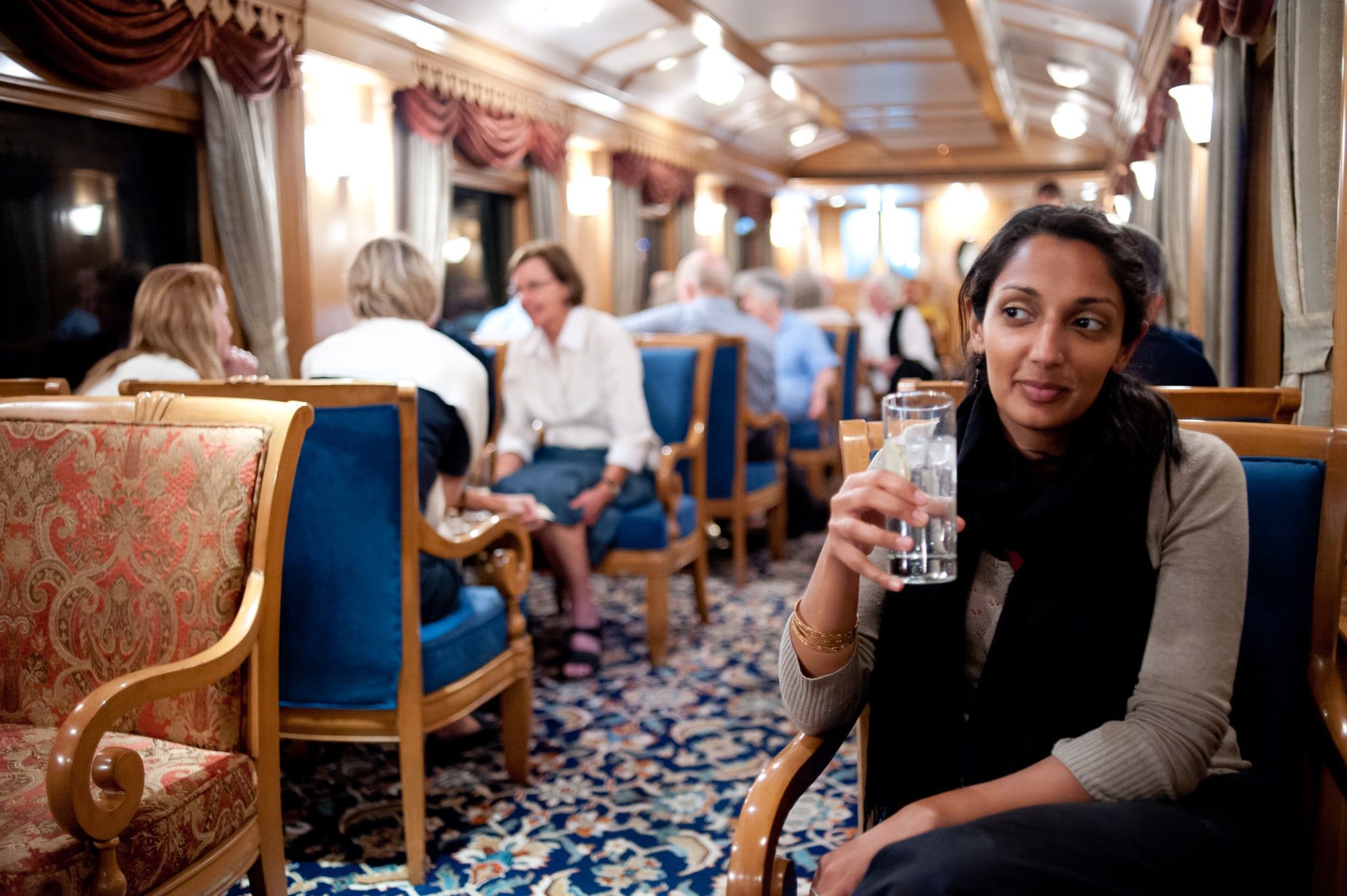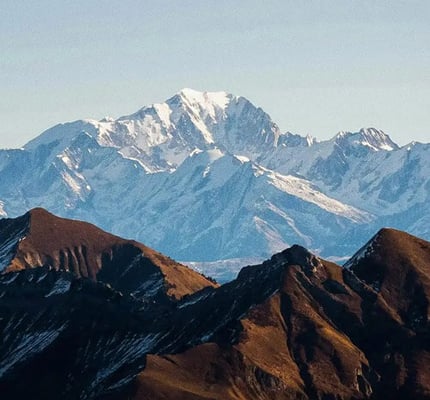Lightfoot Travel
WhatsApp Business Account

A royal blue train glided up platform 16 at Bombay’s Chhatrapati Shivaji Terminus and hissed to a halt. A gold stripe gleamed down the centre of its body, but the windows remained dark and tinted to the outside world. No one was to be seen. After a few minutes a door opened and a red carpet bounced out and unfurled along the platform like a tongue cooling off. Gathering my things I approached the train as porters began to arrive wheeling matching Gucci luggage, with linen-wearing ladies in tow. A young man in a burgundy hat and brocade dress coat relieved me of my bags and introduced himself as Benoy, my butler for the next seven days, and led me to my suite down a cool, carpeted corridor that smelt of jasmine.
The Indian Deccan Odyssey is one of a handful of luxury tourist trains connecting Bombay to Delhi via Jaipur and Agra – better known as Rajasthan’s Golden Triangle– but unlike some of its tired old predecessors, is a newer, younger model. Inside my suite, it was clear that this train was a picture of health. Thick oatmeal carpet lined the floors and a tight white duvet hugged the double bed that filled the room. At the head, four pillows puffed out their chests, their corners pinched into place and a snip of hibiscus lay in the centre of the bed with a note saying: “Welcome aboard a journey to the depths of your soul….” After checking out the hot showers and marvelling at the DVD player and flat-screen TV above my bed, I slipped into a dress, fastened my pearls, and made my way down the carriage to the bar where the other guests were gathering for dinner, chattering over the clink of Bombay Sapphire and the crunch of salty pretzels.

The Indian Deccan Odyssey was a five-star cruise on wheels. It has all the lacquer and polish of its European competitors, plus a massage room, Wifi, and a gym in which I could cycle while watching the Indian countryside flash by the window. And this train was more about the laidback luxury: guests did not have to dress in formal attire for dinner, but were welcome to get comfy and relax during their meals. All around me white-gloved waiters moved like mime artists, twirling plates above their heads as the train curved and bent around corners, rattling along the tracks as we wined and dined. Catching glasses and whisking away napkins, they performed a perfectly choreographed routine, laying on silver thalis of tandoori chicken, masala prawns and turrets of biryani surrounded by pappadums that opened like a lotus, revealing diced salad.
After getting to know my fellow travellers I took myself off to bed, rocking gently under the duvet, and opening my eyes the next morning in Aurangabad, from where we took a coach to Ellora, a secret township in the hills filled with rock-cut wonders. Each wall and pillar of the 30 shrines was carved with faces and fingers, hips and breasts, which represented beautiful examples of Hindu, Buddhist and Jain art. Later that day we were driven to the Ajanta caves, the home of some of the oldest known carvings of the Buddha which are now in a desperate state of decay, and spent hours wandering from one cave to the next gazing at the delicate features and graceful movements of the figures. But it wasn’t long before we were ready for tea, cake and a snooze, and were grateful to find ourselves en route back to the palatial sanctuary of our train.
That the Indian Maharaja was a feat of excellence was indisputable. Towels were fluffed and beds laden with nightly gifts, bartenders beamed, and crisp wine breathed in crystal. But sitting in a lace-curtained window, book in hand, watching the world slip by was a shelved dream. For practical reasons the train travelled at night. During the day he stood quietly in local stations, being fed and watered by his engineers until ready to leave again. Throughout the week the train would jolt during dinner and by the morning be waiting at Udaipur, Jaipur, Agra, Sawai-Madhopur, and eventually Delhi Safdarjung. It was like travelling in a luxury Tardis.



But the highlight was a misty blue morning atRanthambore National Park, home of the Indian tiger. Covered in musty blankets, we roared off in Jeeps in search of the big cats. Earnestly listening for every crack of twigs and rustle of leaves we were rewarded by a sighting of not one, but two tigers barely 20 metres in front of our Jeep. Holding our breath we watched as they eyed one another, before jogging forward and leaping in the air with an apocalyptic roar that ripped through the jungle, lifting birds off branches. Wrestling on hind legs, they snarled and growled, flanks of muscle and fur merging into one before crashing down in a rage and slinking off into the trees licking their wounds.
Once the excitement of tiger spotting had subsided, the remainder of the week was devoted to ticking off tourist boxes: elephant rides up to Amber Fort; sitting on Diana’s bench at the Taj Mahal; gliding along Udaipur’s Lake Pichola – the setting for the James Bond film Octopussy – and shopping for jems in Jaipur. On the final evening before arriving into Delhi, we gathered for one last supper in the dining car and toasted a wonderful week with steaks and wine, before slipping between the duvet for the last time and rocking to sleep.
See abundant birdlife and reintroduced elephants at Nkhotakota
Go trekking and mountain biking around the great plateau at Nyika
Relax and unwind on the pristine beaches of Likoma Island
Experience river, 4WD, and walking safaris to see Malawian wildlife
Enjoy a variety of watersports in freshwater Lake Malawi
LimaPeruvian AmazonCusco, Sacred Valley, & Machu PicchuLake TiticacaArequipa & Colca Canyon
Explore Lima’s colonial architecture and vibrant districts
Tour the magnificent Machu Picchu ruins
Take the 1920s-style Belmond Andean Explorer Train to Puno
Explore the Amazon on board a luxury yacht
Visit Lake Titicaca & witness condors soaring above the Colca Canyon
